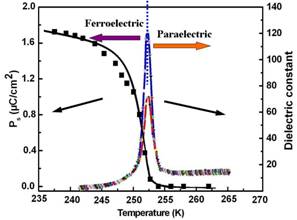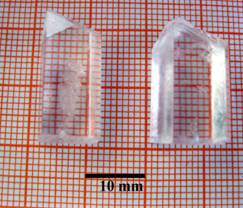Ferroelectric crystals, which generate the electric polarization and spontaneously enable the reverse of electric polarization by inverting the external electric field below the Cuire temperature, has long been an important topic in condensed-matter science, and its application is important as a basic element of memories devices, infrared detector and opto-electronic integrated devices, etc. Such electro-active materials can store and switch their polarity (namely ferroelectricity) and hence exhibit piezoelectricity by interchanging electric and mechanical functions. Meanwhile, they can sensitively response to temperature changes with high dielectric constants and large pyroelectricity. Under the excitation of intense laser radiation, novel optical phenomena such as the optical nonlinearities, electro-optic effect and photorefractive effect have also presented in ferroelectrics.
Prof. LUO Junhua and his colleagues at Fujian Institute of Research on the Structure of Matter( FJIRSM),Chinese Academy of Sciences, developed a new organic H-bonded molecular-ferroelectric, bis(imidazolium) L-tartrate, as a novel organic ferroelectric assembled by the homochiral ligand with the molecular rotator. The complex possesses a promising large saturated polarization (1.72 μC/cm2) and small coercive field (≈1.1 kV/cm). Variable-temperature X-ray single-crystal diffraction, DSC, dielectric spectra and hysteresis loops confirmed its paraelectric-ferroelectric phase transition. The results have been published as a communication in Angew. Chem., Int. Ed. (2012, DOI: 10.1002/anie.201200407). These findings will urge the exploration of new ferroelectrics and polar functional materials. Progress on the molecular photoelectric functional materials in Prof. LUO’s group can be found in Inorg. Chem., 2012, DOI:10.1021/ic202406f; Cryst. Growth Des., 2011, 11(9), 3744–3747; New J. Chem., 2011, 35, 2804–2810; J. Cryst. Growth, 2012, 338, 157-161; J. Cryst. Growth, 2011, 328, 89–94;J. Cryst. Growth, 2011, 325, 55-59.

Figure 1. The paraelectric to ferroelectric phase transition in the molecular ferroelectric

Figure 2. The reported molecular ferroelectric crystal